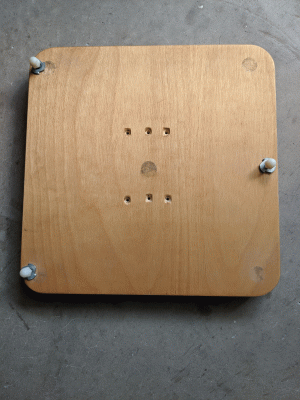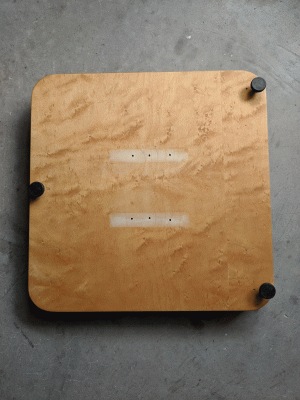Guys, in order to check a precision level, you do not need a level surface. You just put it somewhere flat that allows the bubble to not peg on either end, then flip it 180 degrees. If the bubble ends up in the same position then the level is good to go.
BUT if you have to
calibrate it, that is another thing.
These precision levels are super-sensitive and trying to mess with the leveling screws without knowing exactly what the procedure is will only lead to frustration. To do this without further loss of hair, allow me to shed some light on this. You are going to need a leveling table, a place to put that leveling table on that you will NOT lean on, and a room free of vibration from people walking around or machines running.
Here is my leveling table. It is just a 12" square piece of plywood with a very flat top and three adjustable screws in a tripod configuration - T-nuts and three 1/4-20 screws with nylon caps on the end. Not shown is a bulls eye level.


I use a small aluminum framing square clamped to this tripod table with small clamps, then I level it with a bullseye level. The square allows me to butt the side and one end of the precision square into a corner, then flip it 180 degrees and get it back into the exact same position.
Now follow the instructions in the attached document and that will allow you to calibrate your level with a minimum of fuss.
Keep in mind that it may take up to a minute for the bubble to settle so wait until it fully stops before making further adjustments. With these levels, close enough is not good enough. Get the bubble exactly centered so you can trust it. Once this is done, all you need to do in the future is to set up your leveling table and check the bubble position. You will not usually need to re-calibrate it very often, if at all, unless something really throws it out of whack (like a trip to the floor).







